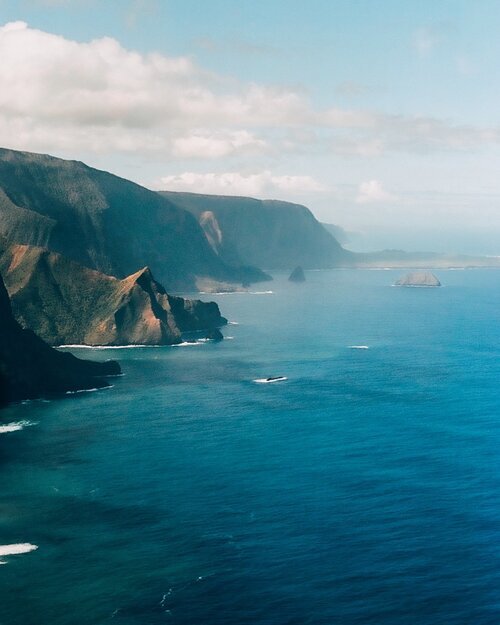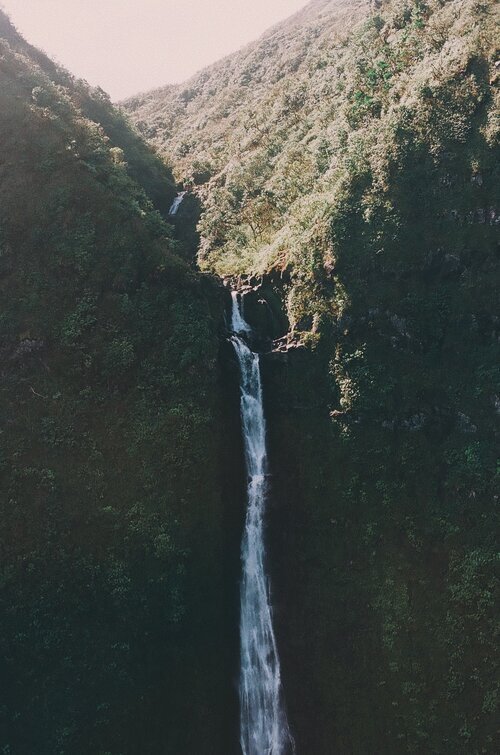Seeing the World through Color
Intersectional Environmentalism through an Indigenous Lens
There are certain facts of life that are wholly accepted as undeniable, “the sky is blue” or “two plus two equals four,” and then there are those that despite clear evidence are dismissed as nothing more than frivolous, or worse insidious, conspiracy theories. Such is the case with climate change. No matter how many devastating wildfires, heartbreaking videos of animals losing their homes to deforestation, plastics strangling marine wildlife, and study after study from scientists discussing the negative impacts of global warming, there is still an alarming population of those who refuse to accept that human choices have a direct impact on our environment.
In recent years the conversation surrounding environmentalism has picked up increasing momentum and suddenly being “#sustainable” has never been so cool. Plastic straws are out (let’s be honest, were they ever really in?) being replaced by metal straws in mason jars; bans in a growing number of cities across the U.S. have caused plastic bags to be swapped for trendy reusable ones; and your favorite brands are probably posting about how and why sustainability is sexy. Small everyday changes like these are steps in the right direction and should not be discredited. But, let’s be frank. We can swap out all of our single use consumer plastic, post as many Earth Day photos to our Twitter and Instagram feeds as we want, but in order for there to be any sense of a meaningful permanent change we must start with the way in which we view Earth.
Perhaps the greatest single thing modern society could do to heal our planet is to shift our understanding of our individual and collective relationship with the Earth away from the Western way of thinking, prioritizing profits and corporate interests, and toward an indigenous one that prioritizes the well-being of ourselves and our environment. Instead of viewing Earth as one giant land grab, we need to understand that our relationship with Earth is reciprocal. It is up to us to decide whether that relationship is a cycle of sustainability or a cycle of destruction. Our success as humans is intrinsically tied to Earth’s success and the understanding that no matter your thoughts on environmentalism, all humans share a universal relationship with Earth. Whether you view Earth as a commodity or as a being to be nurtured, you should have an interest in preserving and respecting it.
When comparing cultural ideologies and behaviors of Western civilizations versus indigenous communities, it is evident there exists a significant divide between the ways in which Earth and her resources are viewed. Western societies often value modernization and advancement, even if such progress comes at the expense of the environment. Earth is viewed as property and therefore commodified through the lens of ownership. In contrast, Indigenous cultures value land in a way that their Western counterparts do not. Rather than view Earth as an inanimate commodity, it is viewed through the lens of stewardship with the understanding that it is a living being that needs to be cared for. Many Indigenous creation stories cite Earth as the original ancestor. In Native Hawaiian culture, for example, this origin is shared through the legend of Papa & Wākea. Papa being the Earth Mother and Wākea being the Sky Father. By humanizing the Earth indigenous peoples forge an understanding of the connection between human survival and Earth’s survival, enjoying and maintaining a successful sustainable relationship with our planet for thousands of years.
To appreciate indigenous mindsets towards Earth it is critical to understand intersectional environmentalism, which examines the connection between injustices faced by marginalized peoples and the ways in which those injustices affect the planet. Issues such as the building of the Dakota Access Pipeline on Sioux land in North Dakota, the construction of the Thirty-Meter Telescope atop Mauna Kea in Hawaiʻi, and deforestation in the Amazon rainforest affecting numerous Native tribes. All are prime examples where the needs of both the community and the environment were disregarded for the sake of corporate interest. Although the corporate entities financing these projects claim altruistic motives -scientific progress, economic development, increased access and opportunity for disenfranchised communities, etc.- these alleged noble intentions mask a litany of concerns ranging from health, legality, politics, social inequity, cultural and historical preservation, and many more. Too often, the disenfranchised communities that are disproportionally impacted by these actions are comprised of Indigenous peoples. As companies continue to favor progress over protection, our already fragile ecosystem is being put under more strain than ever before. Indigenous people understand better than anyone the importance of caring for our earth, and yet fall the most victim to being oppressed by environmental colonialism. We must therefore acknowledge these injustices revealed by intersectional environmentalism so as not to actively participate in the erasure of Indigenous identity. By recognizing intersectional environmentalism in our everyday lives, Indigenous voices are prioritized and placed at the forefront of the conversation.
As a Native Hawaiian born and raised in Hawaiʻi, caring for our ‘āina (land) has been ingrained into my core, as it has for many other Indigenous youth. Growing up, my father made sure my siblings and I recognized our co-dependent relationship with the land by having us tend to our taro patch. In exchange for nurturing our land she would provide us with food to nourish our bodies, instilling in us values of stewardship and reciprocation. With this foundation, I could never bring myself to understand how corporations continuously value profits over people or money over the Earth. It always perplexed me that entities such as corporations who benefit most from the health of our planet, profiting from her natural resources and monetizing her natural beauty, cared the least about maintaining that health.
In a perfect world, everyone would value and relate to the Earth as Indigenous people do, but reality is that the world is far from perfect. To view the world from an Indigenous mindset is to view the world as a collective. It is to understand that you are but one minuscule, yet significant, piece in the giant puzzle of our ecosystem. This co-dependent relationship relies on the understanding that in order for the collective to flourish, all beings present in this system must value the lives and habitats of others as much as their own. To understand Indigenous thinking is to understand that the gains of few cannot be prioritized over the losses of many. Only when we understand the simplicity of this perfect harmony will we truly be able to enact change.
Words: Ilena Burk (@ilenab)



